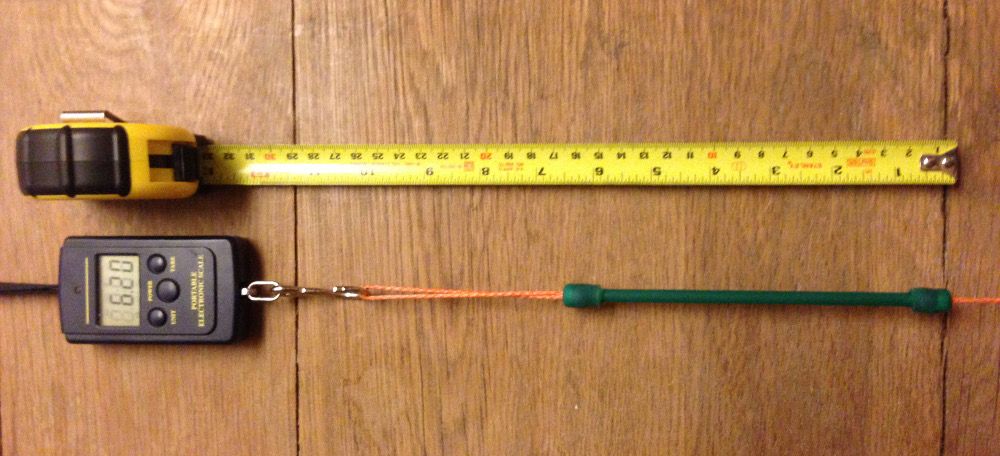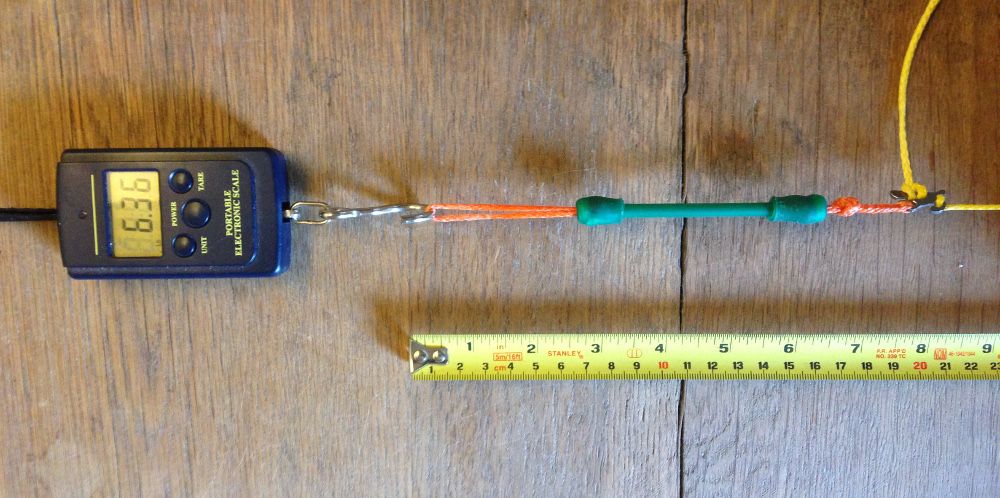Hi guys, I'm new to the forum and this is my first post.
Great forum, super informative. I've been lurking for ages and do recognise a few names from other forums I think.
Anyway, to the point.
I've been looking at self-tensioners on guy lines for a while. I switched to dynema on my tarp and the lack of stretch can make tensioning tricky. Some time back I was building slingshots with theraband green tubes and switched to gold flatbands, which left me with a surplus of green tubing. When I saw folks were using it to make self-tensioners, I thought I've got to get me some of that.
I made a few, the first were made with roughly 6" of tube, stretching out to about 12" plus loops - probably 16" overall when fully stretched. They work fine and do the job, but the length of em is a bit of an irritation. They are not really heavy, but they are bulky and they do limit how close to the ground you can pitch. So in an effort to streamline them, I made some shorter ones, about 3.6 inches of rubber stretching to around 7 inches - and I integrated them into the whole guyline. I wasn't sure these shorter ones would have enough 'twang' power, but it was worth an experiment. Just for the sake of absurdity really, I also made one using about 1.75 inches of rubber, stretching to about 3.5 inches. I was pretty confident this would be useless, but it looked cute. A quick pic....
You get the idea, all using theraband green tube, all built on 2.2mm dynema (Stein Skyline). They all seemed pretty strong to be honest, even the little one, which got me wondering....
If it takes - lets say 10lbs of effort - to pull a 6 inch tube out to 12 inches, how much effort does it take to pull a 2 inch tube out to 4 inches?
I remembered I had one of those cheap digital fishing scales, I bought to weigh luggage and realised I could used this to measure the actual pull required to take my self tensioners to full stretch. Now I know there are a bunch of clever people on this forum who are probably already doing the physics, but the answer genuinely surprised me.
First up, the 6" rubber, stretched out to 12 inches....
That's 6.50lbs.
Next, 3.5 inches of rubber, stretched out to about 7 inches or so....
That's 6.20lbs.
Next, 1.75 inches of rubber, stretched out to about 3 inches...
That's 6.30lbs.
Pretty much all the same really. It's not an exact test, the lengths are all a bit off as I made em up using mark I eyeball, but I'd say that the differences are just from minor differences in the percentage of stretch applied. But they are all roughly 200% stretched and they all require the same amount of effort to achieve it. Sounds obvious when I type it out, but I really wasn't expecting that. I honestly thought the longer tubes would be 'stronger'. Basically the draw weight is the same regardless of 6 inches or 6 foot, the only difference is the draw length. The longer tubes take less effort per inch. The shorter tubes though, are less bulky, weigh less, are cheaper to make, while they exert/absorb the same poundage of tension.
I would imagine the physics holds true regardless of the type of rubber used. The question is, is there anything I'm missing here? Before I dive in and make a bunch of mini-tensioners, is there any advantage to using longer rubber you can think of?
Sorry if all this is old news or has been covered before.
Cheers.









 Reply With Quote
Reply With Quote









Bookmarks